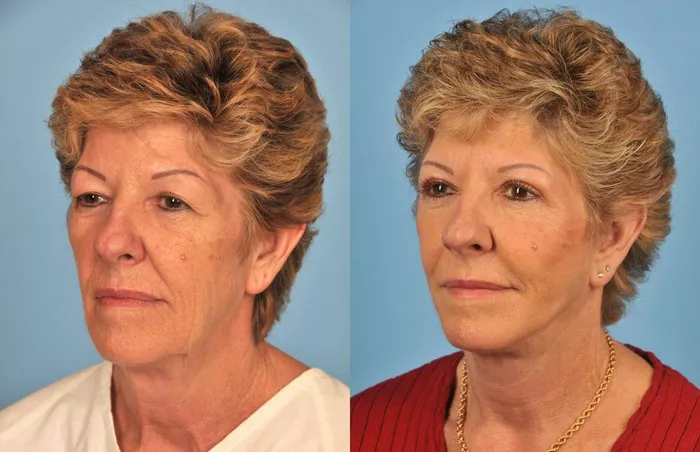Wrinkles are a natural part of the aging process, but many individuals seek effective treatments to reduce their appearance and achieve smoother, more youthful-looking skin. Laser therapy has emerged as a popular option for addressing wrinkles, as it can stimulate collagen production, improve skin texture, and minimize the signs of aging. However, with various laser options available, it’s important to understand which laser is best for treating wrinkles. In this article, we will explore different types of lasers commonly used for wrinkle reduction and discuss their benefits and considerations.
1. Fractional Laser Resurfacing
Fractional laser resurfacing is a popular and versatile treatment for wrinkles. It uses laser technology to target specific areas of the skin, creating microscopic channels and triggering the body’s natural healing response. The two main types of fractional lasers are ablative and non-ablative lasers.
-
Ablative Lasers
Ablative lasers, such as carbon dioxide (CO2) and erbium:yttrium-aluminum-garnet (Er:YAG) lasers, remove thin layers of the skin’s surface, promoting collagen production and smoothing wrinkles. Ablative lasers typically provide more dramatic results but require a longer recovery period.
-
Non-Ablative Lasers
Non-ablative lasers, such as fractional erbium (Er:Glass) and fractional CO2 lasers, deliver laser energy without removing the outer layer of the skin. These lasers heat the deeper layers of the skin, stimulating collagen production and improving wrinkles. Non-ablative lasers have less downtime compared to ablative lasers but may require multiple sessions to achieve desired results.
Fractional laser resurfacing is generally suitable for individuals with mild to moderate wrinkles. It can address various concerns, including fine lines, wrinkles around the eyes and mouth, uneven skin texture, and age spots. The choice between ablative and non-ablative lasers depends on the severity of wrinkles, downtime considerations, and individual preferences.
2. CO2 Laser
The carbon dioxide (CO2) laser is an ablative laser that has been used for many years to treat wrinkles. It emits high-energy light that removes thin layers of damaged skin, stimulating collagen production and tightening the skin. CO2 laser treatments are effective for treating deeper wrinkles and can provide long-lasting results.
However, CO2 laser treatments have a longer recovery period compared to non-ablative lasers. The skin may appear red, swollen, and sensitive for several days to a few weeks after the procedure. It is essential to follow post-treatment care instructions and protect the skin from sun exposure during the healing process.
CO2 laser treatments are typically performed by dermatologists or cosmetic surgeons and require careful assessment and customization based on individual skin type and concerns.
3. Erbium Laser
Erbium lasers are versatile tools for treating wrinkles and improving skin texture. They emit wavelengths that are absorbed by water in the skin, allowing for precise and controlled removal of the outer layers. Erbium lasers can be ablative or non-ablative, depending on the specific device used.
-
Ablative Erbium Lasers
Ablative erbium lasers provide more significant results for wrinkles and skin tightening. They remove the outermost layers of the skin, prompting collagen remodeling and rejuvenation. Ablative erbium lasers may have a shorter recovery period compared to CO2 lasers.
-
Non-Ablative Erbium Lasers
Non-ablative erbium lasers deliver laser energy without removing the surface layer of the skin. They heat the underlying tissues to stimulate collagen production and improve wrinkles. Non-ablative erbium lasers have less downtime but may require multiple treatments for optimal results.
Erbium lasers offer customizable treatment options for various wrinkle concerns. They can address fine lines, moderate wrinkles, and skin laxity. Like CO2 lasers, erbium laser treatments require expertise and careful evaluation of the individual’s skin condition to determine the appropriate laser type and treatment parameters.
4. Fractional CO2 Lasers
Fractional CO2 lasers combine the benefits of fractional technology with the effectiveness of CO2 lasers. These lasers emit tiny columns of laser energy into the skin, targeting specific areas while leaving surrounding tissue unaffected. This fractional approach promotes faster healing and reduces the risk of complications compared to traditional CO2 lasers.
Fractional CO2 lasers are highly effective for treating deep wrinkles, severe photoaging, and significant skin laxity. The treatment stimulates collagen production and triggers a tightening effect, resulting in smoother and rejuvenated skin. However, fractional CO2 laser treatments may require more downtime and have a longer recovery period compared to non-ablative lasers.
5. Non-Ablative Lasers (e.g., Fraxel Laser)
Non-ablative lasers, such as the Fraxel laser, are designed to improve wrinkles and skin texture without removing the outer layer of the skin. These lasers deliver laser energy into the deeper layers of the skin, stimulating collagen production and promoting natural skin rejuvenation.
Non-ablative laser treatments are generally less invasive, with minimal downtime and faster recovery compared to ablative lasers. They can improve mild to moderate wrinkles, fine lines, and skin tone irregularities. Multiple treatment sessions may be needed to achieve optimal results.
Considerations and Consultation
Choosing the best laser for wrinkles depends on several factors, including the severity of wrinkles, desired results, downtime availability, and individual skin characteristics. It is crucial to consult with a qualified dermatologist or cosmetic surgeon who can assess your skin and recommend the most suitable laser treatment option for your specific needs.
During the consultation, the skincare professional will evaluate factors such as skin type, degree of skin laxity, and the presence of other skin concerns. They may also consider your medical history and any potential contraindications to laser treatments.
In conclusion, various lasers offer effective options for treating wrinkles, each with its advantages and considerations. Fractional laser resurfacing, CO2 lasers, erbium lasers, fractional CO2 lasers, and non-ablative lasers can all play a role in reducing the appearance of wrinkles and improving skin texture. The choice of laser treatment should be based on individual factors, and it is important to consult with a qualified professional for personalized recommendations and treatment planning. With the appropriate laser treatment and proper care, you can achieve smoother, more youthful-looking skin and restore your confidence.

